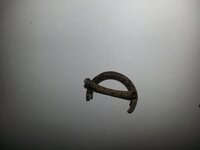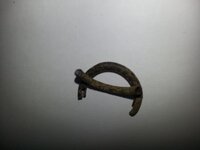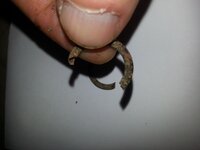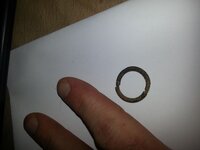Trockett
Jr. Member
This was found in North Denmark. From what ive seen on the Net, its an iron age money ring.. meaning what they used befor the money we know today.. As you can see its Hollow, think its Bronze, very small and Very lite... Ofcourse i broke it when digging it up ... Ew... Not sure of age... maybe over 1000 yrs -2000yrs
But not 100% sure, and thats why im here on the BEST site ive found yet on the WHOLE internet .... Thanks and Nice one... ;
But not 100% sure, and thats why im here on the BEST site ive found yet on the WHOLE internet .... Thanks and Nice one... ;
Attachments
Last edited:






 This is why today you buy your lover a Gold/Silver Ring... it stems from back then.
This is why today you buy your lover a Gold/Silver Ring... it stems from back then.

